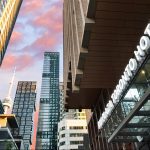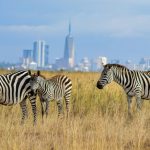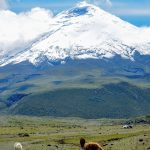Why Nairobi is an essential pre- or post-safari destination
MITCH MCCLUNG
Kenya is unquestionably East Africa’s tourism hub, well known for its world class safari experiences, from spotting the Big Five in the Maasai Mara to the flamingos at Lake Nakuru made famous in the film Out of Africa. It is a bucket list destination for any traveller wanting to enjoy the best of Africa’s beautiful wildlife expeditions.
But the gateway city to these experiences, Nairobi, is often overlooked and underappreciated by safari tourists, and they miss out on an incredible urban experience that provides a perfect contrast to a safari vacation.
With a population of 5.8 million, Nairobi is a sprawling metropolis ranging from the ultra modern to pockets of immense poverty, but it provides a rich tapestry of diverse cultures, shopping, dining and colourful opportunities of people watching that are not to be missed.
Nairobi’s population is well represented by Kenya’s many tribes, each with their own unique languages and traditions. Swahili and English are official languages, but visitors will hear a wide range of tribal languages such as the Bantu based Kikuyu and Luyah tongues to the Nilotic Luo. Kenya also has a sizable South Asian community, with migrations from Punjab and Gujarat having taken place during British colonial rule to build railroads and are now a mercantile community in the post-independence era. There is a large Somali community in the Eastleigh district of the city, and an expatriate community from all over the western world. In short, it is a cultural melting pot with communities that will be less familiar to a Canadian traveller.
Visiting one of Nairobi’s markets provides sensory experiences for visitors not seen in other parts of the world. The Masai market rotates in locations across the city and offers Masai handicrafts including wood carvings, ornate beaded jewellery and the famous woven bags called Kiondos. Haggling is expected! The City Market gives a slightly more local flavour and in addition to stalls selling the typical tourist offerings, there are butchers, fruit and vegetable vendors, hawkers selling flowers. Visitors can experience a sensory overload of sights, sounds and smells unique to Africa.
For a truly authentic visit to Kibera, your guide may take you on one of Nairobi’s fabled Matatus. A Matatu is a privately operated minibus or van that operates on the city’s traditional bus routes. They are often garishly decorated with bright graffiti and paint with blaring music. The business approach is “there is always room for one more” and vans designed for 12 passengers may be rammed with over 30 people, with the touts/conductors often hanging out the open door of the vehicle. This is a raucous experience for the bravest travellers, but the reward of a unique, local experience will be reaped for those adventurous enough to try with their guide.
The Giraffe Centre is an absolute must see attraction in Nairobi. Home to seven females and three males, the Giraffe Centre offers an engaging, up-close experience with giraffes. Visitors will get a short introduction about the giraffes from the guides and then are given food pellets to feed the giraffes. There is a platform to feed the giraffes from, allowing close-up encounters and lucky visitors may even get a kiss.
With its diversity, there are some interesting culinary experiences in Nairobi that visitors should be sure to try. The Lord Delamere Terrace at the Fairmont the Norfolk hotel is a famous meeting place at an iconic hotel serving drinks and light meals from morning until midnight. There is a legendary restaurant called The Carnivore located in the Langata suburb that is worth a visit. It is an all you can eat experience of charcoal grilled meats. Although they can no longer serve famous game meats, visitors can still enjoy ostrich and crocodile in addition to traditional beef, pork & chicken, and for those wishing to dance, the Simba Saloon section of the Carnivore has been a famous night life spot since 1980. For traditional Swahili cuisine, Malindi Dishes has been an affordable local restaurant for nearly five decades and is located right in the city centre.
For those that are not going on a safari, Nairobi National Park is a game reserve located just 7 km from Nairobi’s centre. Although a small reserve with 117 square kilometres, it can deliver big game experiences including rhinoceroses, lions, leopards, elephants, zebras and giraffes. Excursions can be booked through your hotel or a local tour company.
When choosing unique accommodation in Nairobi, you’ll find options you wouldn’t typically expect in a major urban centre. Nairobi is unique in that its city borders meet a national park offering lodge-style stays that are usually found deep in the reserves.
Nairobi Tented Camp is the only property located inside Nairobi National Park. It gives guests the rare opportunity to spend a night or two immersed in nature for approximately $100 per person. It’s an ideal option for travellers staying in the city who want an authentic safari experience just a short cab ride away.
On the edge of the city, overlooking the park, sits the Ole-Sereni Hotel. This 5-star property provides some of the best views in Nairobi, paired with all the comforts and service expected from a luxury hotel. After a day exploring the cosmopolitan city, guests can retreat to their rooms or head to the rooftop bar to unwind and enjoy sweeping, unobstructed views of the park.
Visitors to Kenya will miss out on a vibrant cultural experience if they don’t spend a couple of days before or after their safaris to one of Kenya’s famous game parks. The locals are friendly, helpful and respectful, and immersing oneself into Nairobi’s cultural tapestry will be a highly rewarding add on to its world class wildlife offerings.

















